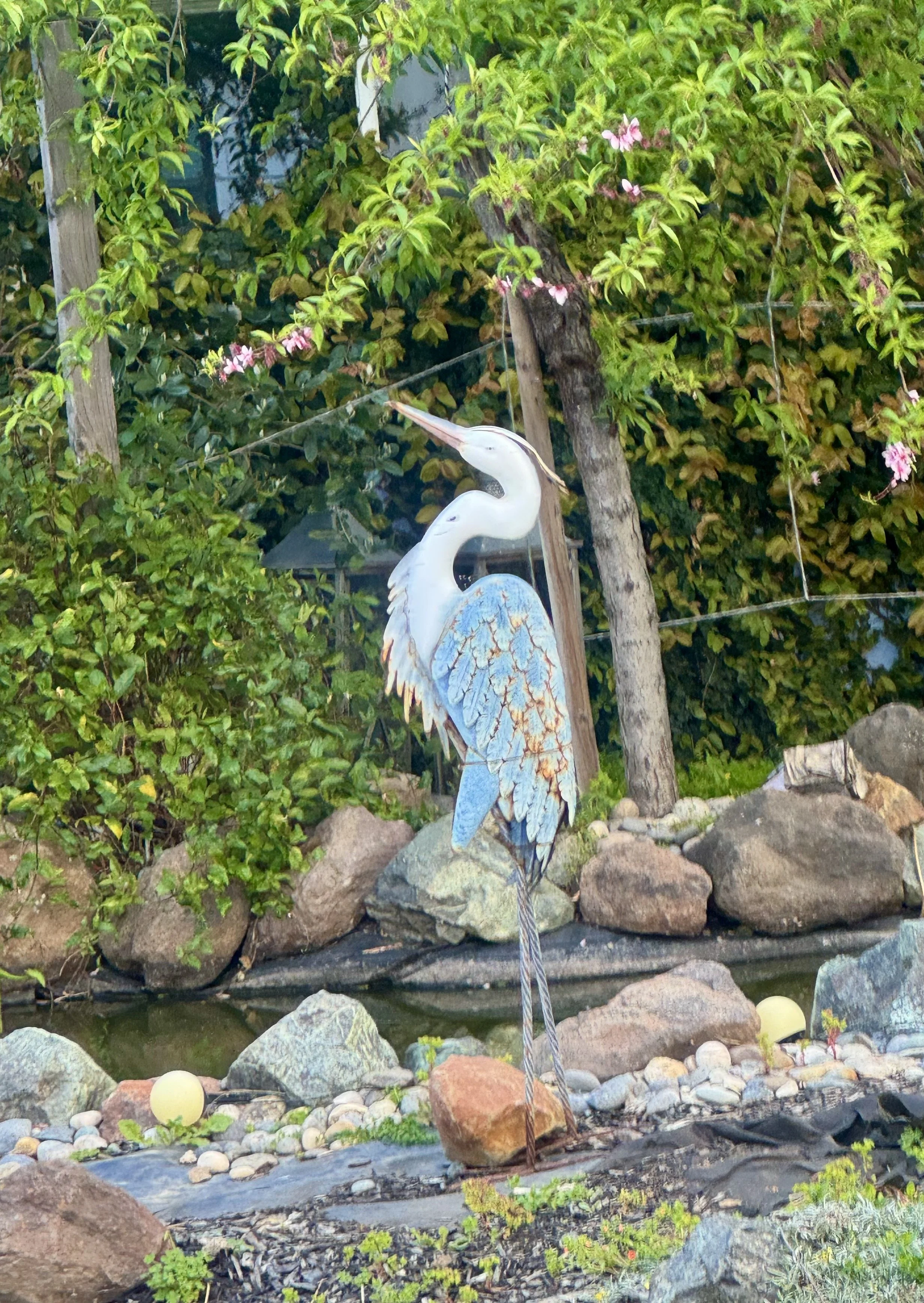two-acre lake
to do her business. By the time we walked half way around, I spotted a Great Blue Heron gracefully walking
passed some ducks in shallow water, looking for prey. While they do eat other animals, their man source of food is fish. Unlike
other waterbird species which ofter feed together, herons are extremely protective of their fishing area.
Now I have taken photos of herons all around the Bay Area for years. What made this time so different is I actually witnessed one catch a fish more skillfully than the fishermen I see
fishing on the Los Gatos Creek trail with a mile or two from my home. While they wade in the water, herons scan for fish with
their keen eyesight, and once they target one they spear it with their long beat. While I didn’t actually see it spear the fish
I did see it swallow it whole.
The following poem "Silent Fisher” written by Mary Oliver reflects on the presence and behavior of herons, describing them
as graceful, contemplative, and skilled fishers. She captures the tranquility and beauty of these birds that in their natural
habitat, emphasizing their quiet persistence and patience, qualities we can all learn from.
Silent Fisher
By waters edge where reeds do sway, The heron stands in quiet display.
With legs so long and eyes so keen, it hunts in waters clear and clean.
A symbol of the patient art, the heron’s grace does touch the heart.
In every stance, tale of might, the heron waits through day and night.
A guardian of the river’s flow, the heron moves with quiet glow.
Note: Look closely and you can see the heron grasping it's prey between its beak. There is also a short video clip





























































































































































































































































